When the Brook Trout Leaps –
By Anonymous –
The slender dew-tipped grasses are trembling in the breeze,
The east is blushing rosy red beneath the Sun’s caress,
The wild rose bends to kiss the stream—but only Nature sees,
And the reed-harps play weird music just above the water cress.
The quail is calling loudly where the tangled bushes grow,
The startled frogs are diving, and the noisy blackcaress bird scolds.
The stealthy rat is hunting where the deeper waters flow,
And the bees are sipping honey that the wild plum’s blossom holds.
The air is overladen with the wild-flowers’ fragrant scent’
The morning star is fading’ and the sharp-eyed night owl sleeps;
Myriad birds are singing to the stream’s accompaniment
And the world is full of gladness — when the brook trout leaps.
By Glynn Wilson –
CATOCTIN MOUNTAIN, Md. — Poets sing of them. Anglers covet them. The fact that they still survive at all in this stressed out twenty-first century world all across their Appalachian range is a feat of conservation worthy of books and song.
From the craggy peaks of North Georgia across the Blue Ridges and into Canada, the brook trout, also called speckled trout, have survived here in evolutionary stasis for 10,000 years since the last Ice Age.
“This is really Appalachia’s mountain fish,” says Dr. Nathaniel Hitt with the U.S. Geological Survey, who I encountered this summer conducting research in one of Maryland’s cold water streams. Owens Creek is a lovely little babbling brook running through Catoctin Mountain Park down the mountain to the town of Thurmont.
Brook trout are just one of the most visible of 12,000 animal species that evolved from animals that were never directly affected by the moving glaciers during the last Ice Age, according to research that has been ongoing in the Appalachian region for decades. The northeast to southwest orientation of the peaks allowed animals such as elk, white-tailed deer, wild turkeys and black bears to migrate along the slopes and escape the massive climate changes then.
Secret Vistas: The Great Smoky Mountains
Before this century is done, however, climate change due to global warming from the burning of fossil fuels for energy and transportation may finish them off. Us too. But not if the United States Department of the Interior has anything to say about it.
Due to circumstances having nothing to do with fishing, and certainly not the specialized business of fly fishing, I became infatuated with the story of the speckled trout this summer when I learned that a population of wild, native brook trout still survive in this itty bitty babbling brook here by a stunning forested campground on the side of a mountain.
No, they are not stocked here by the Maryland Department of Natural Resources. They still spawn in the fall and emerge all beautiful in the spring as they’ve been doing for at least 10,000 years, with their distinctive red spots, silver and olive green bodies, and orange and yellow highlights.
How in the world do these fish survive, and how do fisherman actually catch them, in these tiny mountain streams? That was my question. At a glance, both appear nearly impossible.
Oh, I’ve seen “A River Runs Through It,” and watched Brad Pitt as Paul Maclean work his beauty, shadow casting in the Big Blackfoot River in Montana. That made sense to me, even if I’ve no real desire to do it myself. I’m no fisherman. My dad was one. It was his chief occupation next to wiring up telephone networks and tinkering with clocks and watches. It was how he got away from it all, outdoors in nature, going for bass, bream and crappies in the lakes of Alabama.
In his memoir, Fly Fishing Through the Midlife Crisis, former New York Times editor and Alabama native Howell Raines tells how he got hooked on fly fishing by Dick Blalock, a foreign service agent who took the time to school a Washington correspondent for the Times on the art and science of fly fishing for trout in the mountains of Virginia and Pennsylvania.
“This species of trout has never been stocked in this stream,” Blalock tells Raines about a small river in Shenandoah, Virginia called Rapidan, a favorite of Herbert Hoover where he built the first presidential retreat.
Herbert Hoover’s Camp Rapidan Tour, Shenandoah National Park
This also happens to be true of Owens Creek.
It bubbles up from a mountain spring out of the protected ground in Catoctin Mountain Park near Camp David, and runs cool and clear for two miles through the park, shaded and unpolluted by agriculture or industry. It is one of the few streams left in these parts where you can still see and catch a wild, native brook trout.
“They go back to the Ice Age,” Blalock says. “That means they have been here in this form, just as we see them today, for ten thousand years. They are survivors.”
Furthermore, the fishing advocate and guide waxes on, “They are the most beautiful fish that God ever put on this earth. When they are in their spawning colors, they are just breathtaking,” he adds, Raines says, “for those who need prompting to adore the lush greens and pinks, the unmitigated reds of Salvelinus fontinalis — ‘the little salmon of the waterfall’.”
“These brook trout will strike any fly you present, provided you don’t get close enough to present it,” Blalock says, obviously joking. It is part of the lore of this fish, how hard they are to catch. Which may be one reason some people are crazy enough to try.
“This means the fish are predatory, but skittish,” Raines adds. “More to the point, pursing them prepares us to receive the central teaching of Blalock’s Way. To achieve mastery is to rise above the need to catch fish.”
Now this I can related to. The way I figure it, if you are going to go to the trouble of equipping yourself with a bunch of expensive gear, take the time to learn how to cast and set the hook on a fish, go out of your way to find the fish, torture them with a hook in their mouth and jerk them out of their shallow habitat writhing in the air like flying prisoners, the least you could do is start a fire and cook the poor things. And yes eat them. So far I’ve yet to run across anyone writing about how they taste, but I’m sure that information can be found somewhere on the web with an internet connection.
But you can’t do that around here, anymore. The limit is two and you have to get the hook out of their mouth and ease them back into the water as fast as possible. This fish is that important. Read on to learn why.
“I will never kill another trout,” Blalock told Raines. “I release every one I catch, no matter what the regulations call for. There are too few of them in the world, and each one is too precious to do something as wasteful as eating it.”
Big Game
According to the official story on the brook trout in these parts told by the National Park Service, trout are the “big game” of Catoctin Mountain streams. “They are the pinnacle species in the food chain, but also the top prize of anglers.”
Trout are members of the Salmonidae family, which includes salmon, char, whitefish, graylings and true trout.
“They are mostly predatory, eating anything they can swallow,” experts say, which includes sculpin, a smaller fish also under intense study by the federal government, especially the U.S. Geological Survey.
Brook trout prefer cold, swift waters, and due to nearly heroic conservation efforts, there are a few of these cold water streams remaining not too far from the big cities of the Eastern Seaboard.
Big Hunting Creek, which runs down the other side of Catoctin Mountain Park by Cunningham Falls State Park, is stocked with brown and rainbow trout, although if you are lucky, you might find brook trout there too. It has enjoyed protection since 1933, longer than any other Maryland stream. It’s also famous as a fishing destination for previous American presidents, especially Franklin Roosevelt. He called his retreat here “Shangri-La.”
Camp David: The White House in the Mountains of Maryland
The speckled trout is the only trout native to Catoctin Mountain streams, which also includes Blue Blazes Creek by the park’s mountain whiskey still exhibit. They say the water was perfect for making moon shine from the corn grown on local farms. I suspect in those days they figured out how to catch and cook speckled trout.
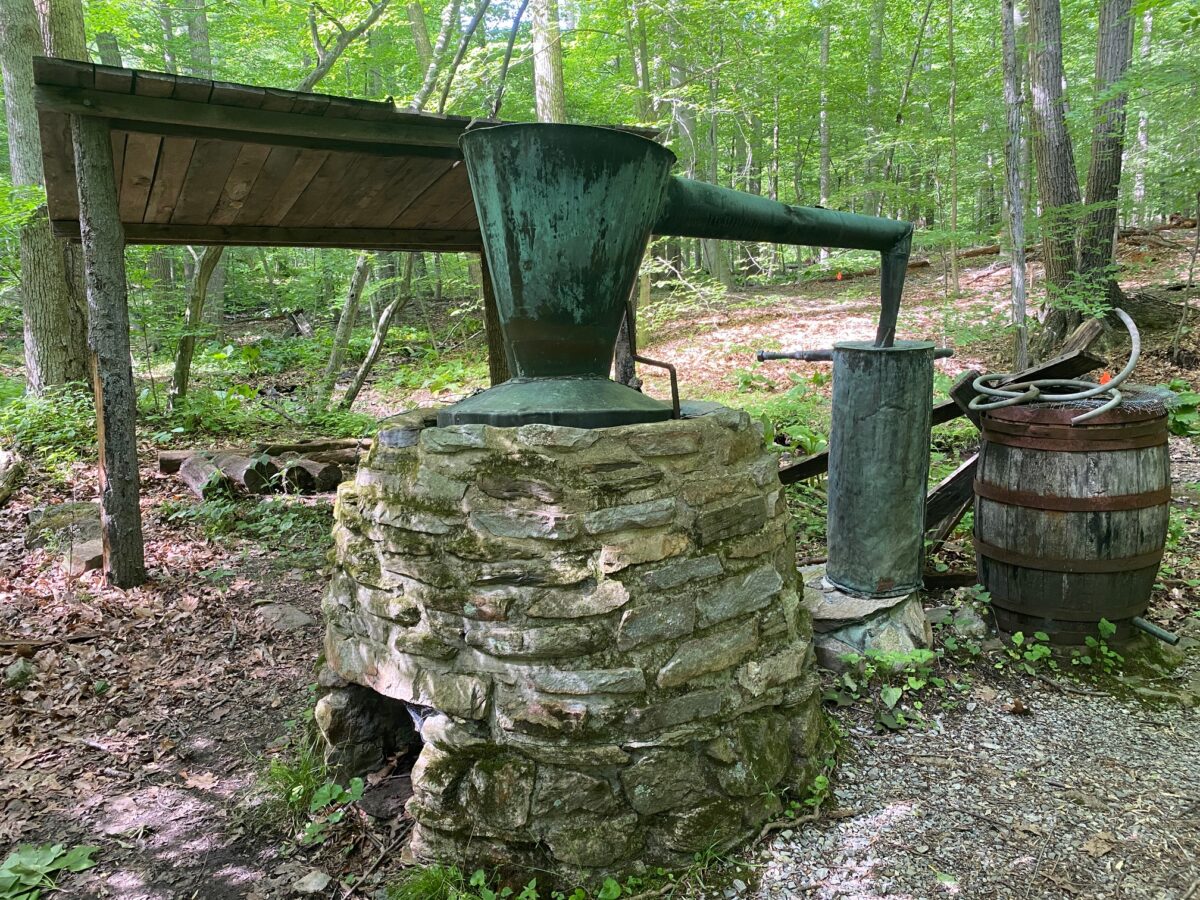
Could this be Liam Van Winkle’s Whiskey Still?
The brook trout is a member of the char genus, more closely related to lake trout, bull trout and arctic char than to the rainbow or brown. To say they are more finicky about their habitat than the other trout is to put it mildly, I’m told.
“If you are quiet and lucky, you may see them splashing in Owens Creek or the Blue Blazes Creek,” the park service says, just baiting you in to give it a try.
But the way I see it, you would have to be awfully lucky. I’ve been trying nearly every day for four solid months. When I first went looking for a fly rod and reel and some flies to give the sport a try myself, a local customer in the Walmart looking for steelhead bait had this to say when I told him I was looking for a rig to go after brook trout.
“These brook trout around here will swim right up to your fly and check the brand real close before they bite,” he said. “Good luck.”
Walmart didn’t have any of the proper equipment anyway, so I found a rig at Dick’s Sporting Goods in Frederick, and added a few small flies, some line and fly flotation goo from the Beaver Creek Fly Fishing Shop near Smithsburg. A guide there offered to take me fishing, for a fee. I offered free photos and video footage for promotional purposes. She never called back. Her loss.
Lindsey Donaldson, chief of Resource Management at Catoctin Mountain Park, told me more about them in an interview.
“Owens Creek is one of only a few watersheds in Maryland that continues to support wild populations of brook trout, which require clean, cold water to survive and reproduce,” she said. “Brook trout populations in the eastern U.S. have been severely reduced due to deforestation, increased water temperatures, development, introduction of non-native species such as brown trout, and the erosion of soil that smothers trout eggs.”
The headwaters and first two miles of Owens Creek are protected from these threats within the boundaries of Catoctin Mountain Park, a unit of the National Park Service.
“Brookies cannot tolerate warm water as well as other trout species and do best in water that does not exceed 68 degrees Farenheit,” she added. “The cool ground water that feeds the creek and shade from the park’s mature trees has kept the water cool enough for the brook trout to survive.”
Swift water with alternating pools and riffles provides trout with enough oxygen, and here the dam on Big Hunting Creek traps sediment and guarantees a base flow of 1.5 cubic feet per second. The dam also releases water from the bottom of the lake in the summer to help lower temperatures.
Shade trees and sturdy riverbanks help keep a stream cool. A healthy trout stream supports plenty of insect larvae, crustaceans and other fish. A swift, silt-free stream with tree cover provides the best habitat for the prey trout are looking for.
But if you want to try and catch them, they are a very shy fish. They need pools to hide in and to cool themselves, and pools also help the stream’s chemical balance, allowing the trout’s sensitive prey to thrive too.
Trout eggs can only incubate and hatch in a silt-free nest. They, like the adult fish, need plenty of oxygen and clean water, but they cannot move to find it, so the females find areas with gravel near riffles in the brook to lay their eggs.
Intensive Research
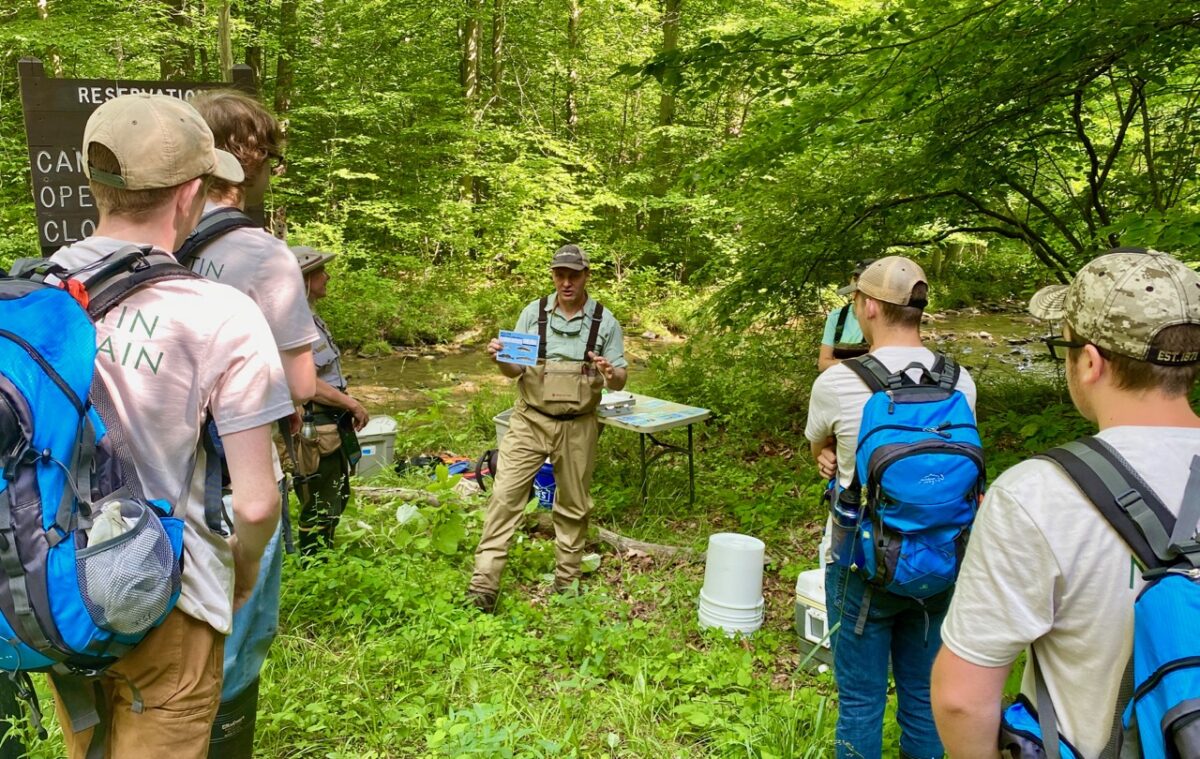
Dr. Nathional Hitt, a researcher with the U.S. Geological Survey, discusses brook trout with staff and visiting students by Owens Creek: Glynn Wilson
In the summer of 2022, I met perhaps the top expert on brook trout, Dr. Nathaniel P. Hitt with the U.S. Geological Survey, working in conjunction with the National Park Service, both agencies within the Interior Department.
His team has been conducting fish and stream research in Catoctin Mountain Park for several years, with on-going projects here and Shenandoah, for example, using stream temperature data to develop some forecasts for brook trout thermal habitat based on various scenarios of air temperature and groundwater.
See more of that research here.
During June, USGS researchers collected Blue Ridge Sculpin from Owens Creek to be reintroduced into Big Hunting Creek, wiped out by a disease likely from a neighboring pond stocked with other fish species. USGS researchers determined from stream studies the disease is no longer present.
One day after finishing up research on the creek, Dr. Hitt sat down for an interview. He explained the range of brook trout, all along the Appalachian Mountain chain from North Georgia through the Great Smoky Mountains in North Carolina and Tennessee, in the Shenandoah mountains of Virginia, the Catoctin Mountains in Maryland and points north through Pennsylvania, all the way to Canada. The population is so diverse there are also “coasters” in the Great Lakes region, and “salters” that swim into the Atlantic.
“When you look across that whole range, what we see is most of those places have declines over time. We’ve lost a lot of the brook trout populations across their range,” Dr. Hitt said. “There are some places that are intact and some places doing real well. Unfortunately, there are too few of those.”
As for Owens Creek, along Foxville-Deerfield Road between Thurmont and Smithsburg, things are looking pretty good.
“Actually, this is one of our more robust populations,” Dr. Hitt said. “It’s in pretty good shape. One of the ways we know that is we see good numbers of juvenile fish.”
One of the predictors of the numbers of juvenile fish is the rainfall level the previous year.
“What we’ve learned from our research is, if we have a winter with massive flooding, we tend to see fewer juveniles the next year. That’s not a big deal one year out of five,” he said.
But if the floods keep coming year after year, that’s not good.
“From a climate perspective, extreme weather becoming more frequent is a concern,” he said.
The fish don’t like the heat either, so as the Earth warms more and more, that becomes a concern. Earth’s temperature has risen by 0.14 degrees Fahrenheit per decade since 1880, but the rate of warming since 1981 is more than twice that, and 2021 was the sixth-warmest year on record based on temperature data. Averaged across land and ocean, the 2021 surface temperature was 1.51 degrees Fahrenheit (0.84° Celsius) warmer than the 20th century average and 1.87 degrees warmer than the pre-industrial period (1880-1900). The nine years from 2013 through 2021 rank among the 10 warmest years on record.
Climate Change: Global Temperature
“It’s flow as well as temperature,” Dr. Hitt said. “Both of those things matter.”
“Temperature is something people tend to focus on, and for good reason. If these streams get over 68 degrees Fahrenheit (20 degrees Celsius) then fish become stressed. We know that because they start producing stress hormones in the blood. We can observe that. A little is not going to be lethal. But a lot of that IS lethal.”
The research does show a trend in recent years of more extreme rainfall events, he said.
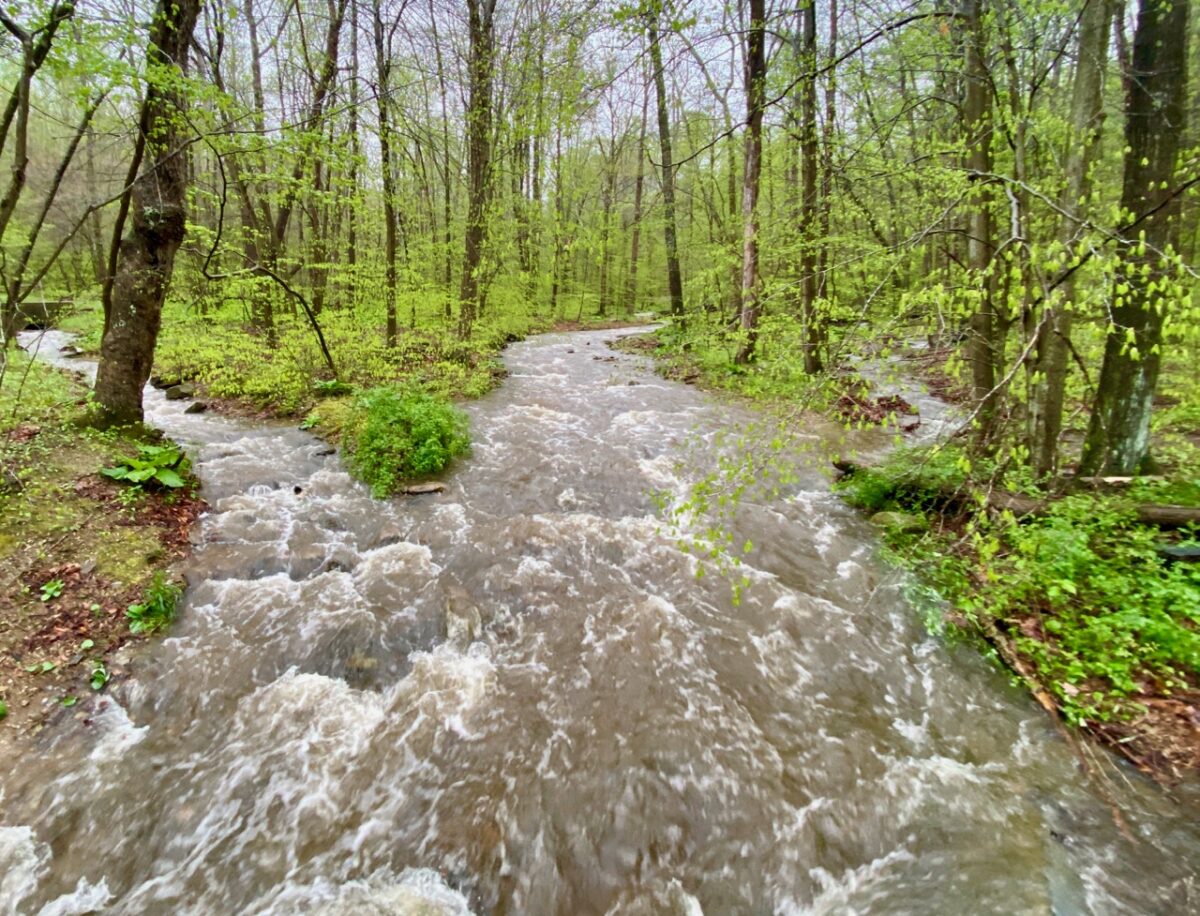
Owens Creek after a spring rain converging at the bridge near the entrance to Owens Creek Campground: Glynn Wilson
One unusual trait of the brook trout is the way they spawn in the fall, not the spring like other species.
“When they are laying their eggs is when their offspring are most vulnerable. It’s over the winter,” he said. “They hatch out in the spring. So they have eggs and larvae that are very vulnerable to winter floods. If you get a flood that flips rocks upside down and tears up the bottom of the stream … back to back years … that’s a bad thing.”
In the Smokies, he said, the park service has done a good job in part by removing rainbow trout, native to the Pacific Rim. They tend to compete with brook trout in the east, he said, especially in warmer water.
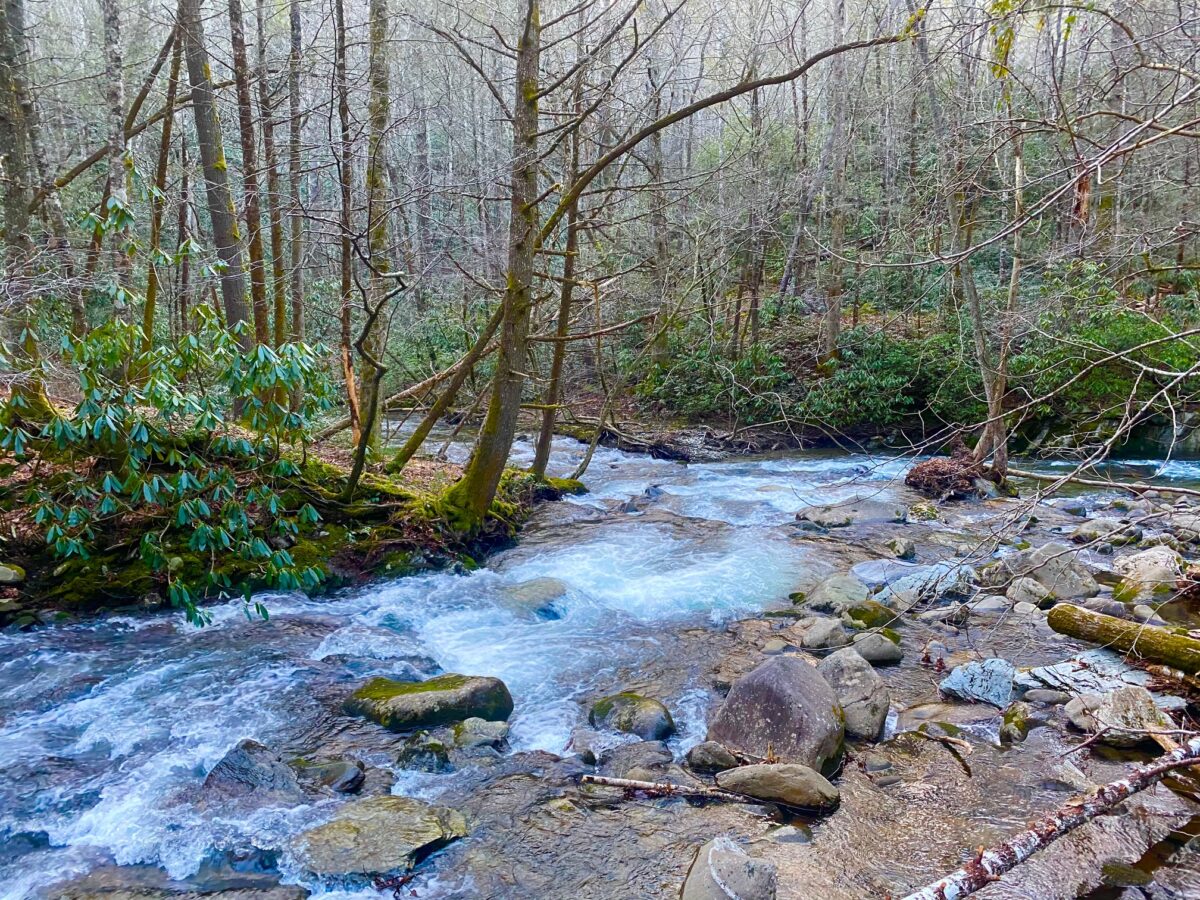
Taking a break by a babbling brook on a winter Sunday afternoon in Cades Cove, Great Smoky Mountains National Park: Glynn Wilson
Here in Maryland, this is a catch and release fishery of brook trout “that should be here for many generations to come,” he said. “But we have to take care.”
They keep an eye on the temperature, and monitor extreme weather events.
The ultimate survival of this admired fish will require “keeping these forests intact,” he indicated, since shade is so critical. The forest also absorbs a lot of the rain water, so you get less flooding.
Reasons for Research
One of the reasons there’s so much focus on researching brook trout is because it is “a culturally important fish for people. Our granddads fished for it and we want our grandkids to fish for them too,” he said.
It’s also economically important, he pointed out, “bringing in lots of revenue to communities. Cold water fisheries is a revenue generator.”
“But it’s ecologically important too,” he insisted. “That’s the main focus of the work we are doing, but we respect those other values. The ecological importance of this fish is really profound.”
In addition to clean, cold water, it requires connected habitats.
“So it’s an indicator of environmental quality, it really is,” he said. “It’s the canary in the coal mine for climate change.”
He sees his role as a scientist to provide good information to decision makers, from the county to the state and federal government.
“So I take that seriously,” he says. “Good information does not guarantee good decisions. But you can’t have good decisions without it.”
And the fact is, if these places had not been set aside by previous generations and put under the care of the National Park Service and its mission of preservation, management and conservation, as well as public access, it’s doubtful brook trout would survive here today.
“The national park system has been called America’s best idea,” Dr. Hitt said, by Ken Burns in his documentary on the parks. “I personally believe that’s true. This is public land. It’s not for the king, and not for the super rich. It’s for everybody.”
It’s for anybody with a curious mind and an open heart, that is, along with the alluring and resilient speckled brook trout, struggling to survive just like us all these days in this stressed out twenty-first century world.
More Photos
___
If you support truth in reporting with no paywall, and fearless writing with no popup ads or sponsored content, consider making a contribution today with GoFundMe or Patreon or PayPal.



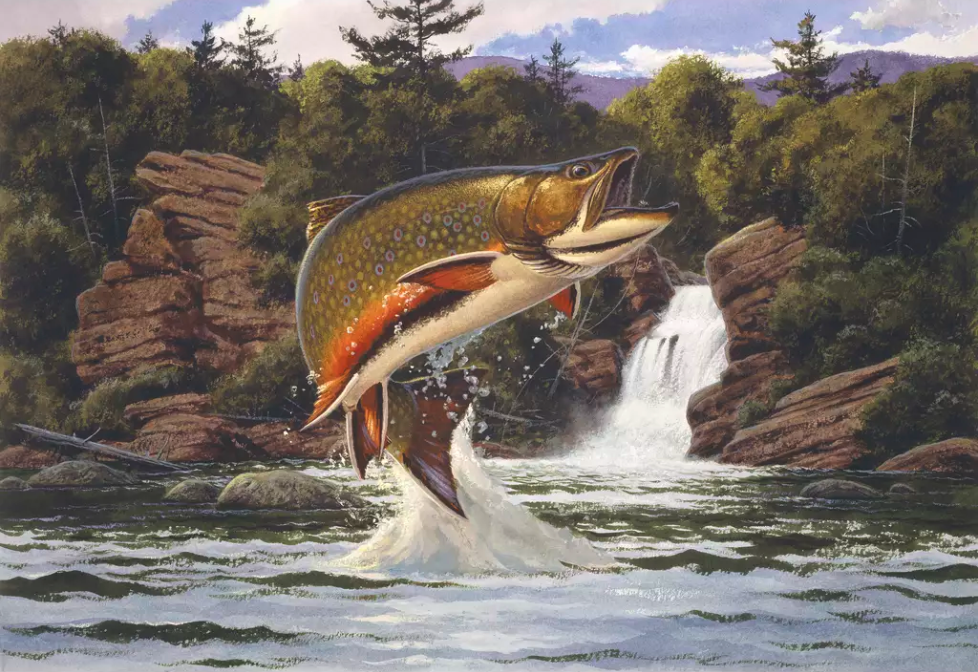


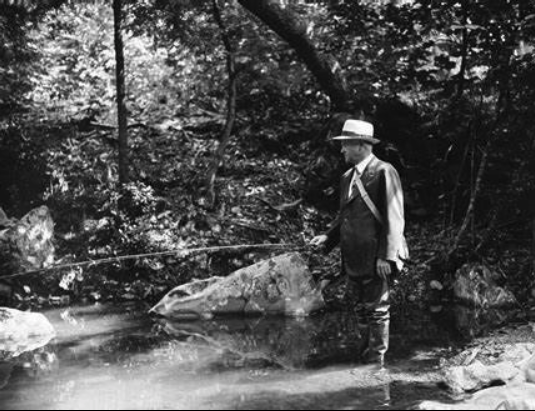
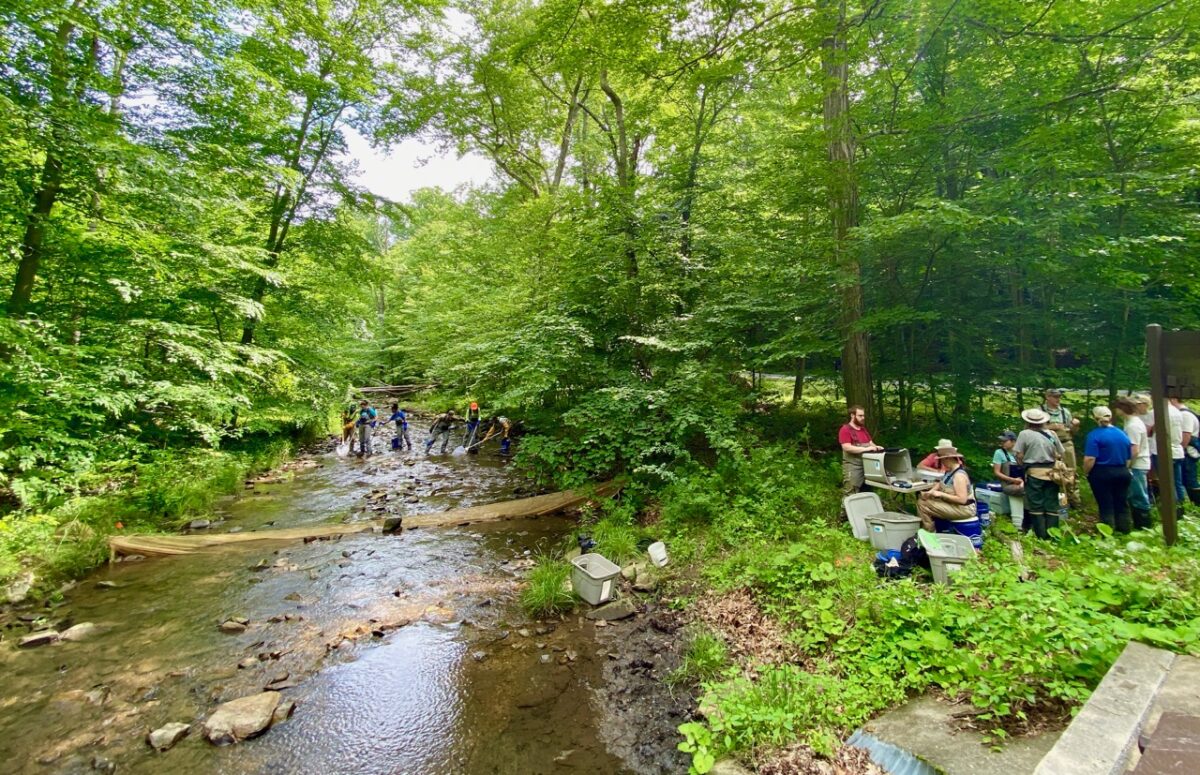
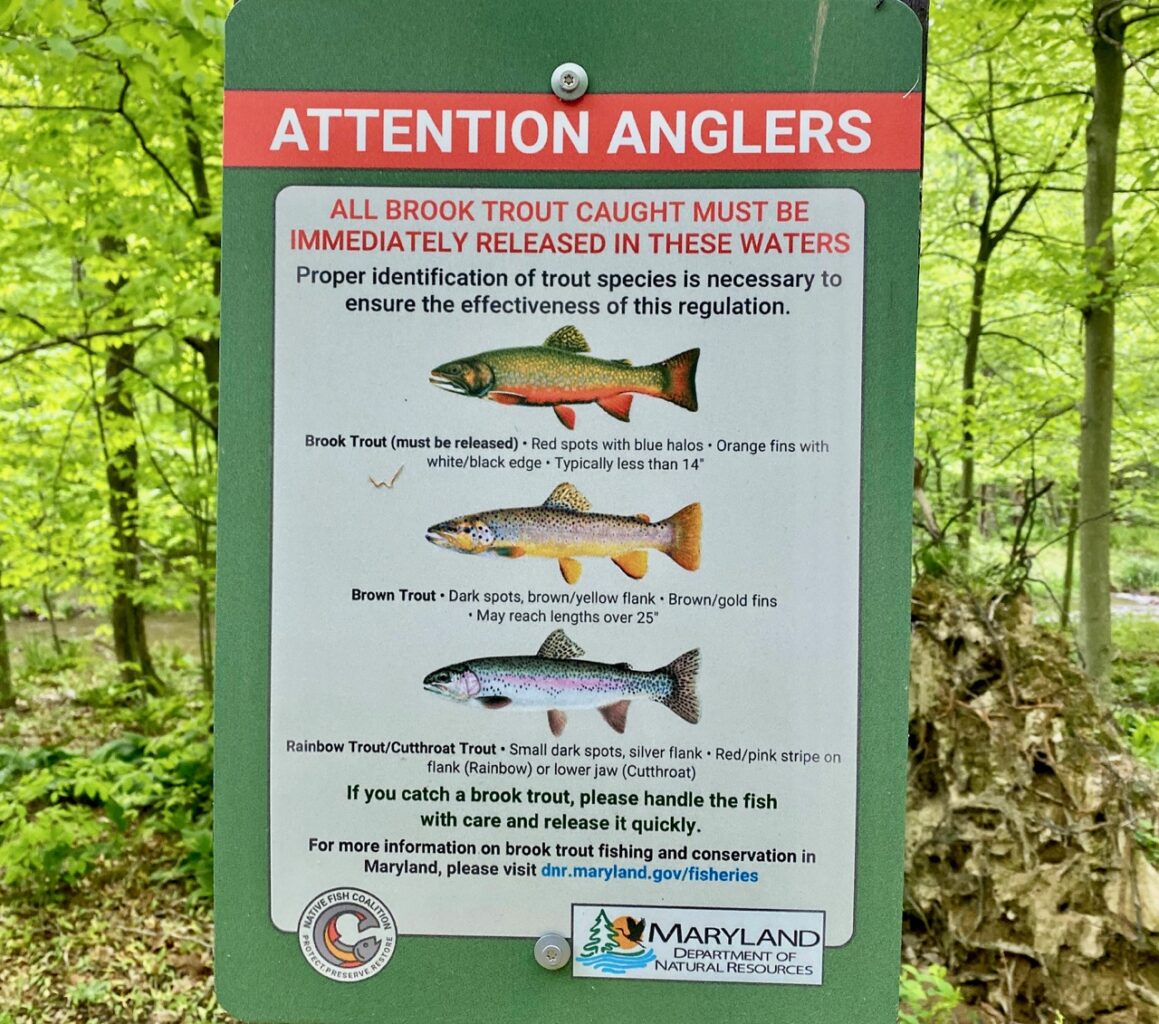
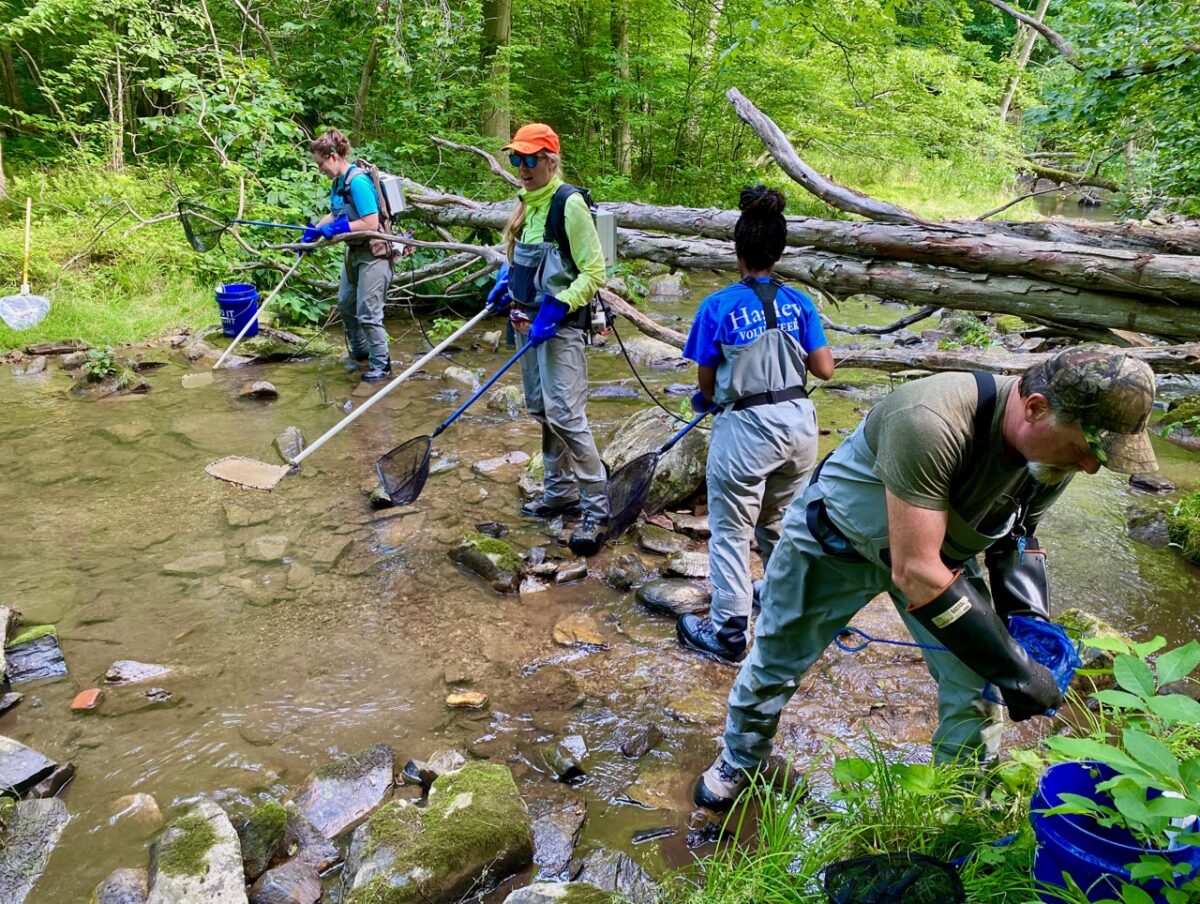
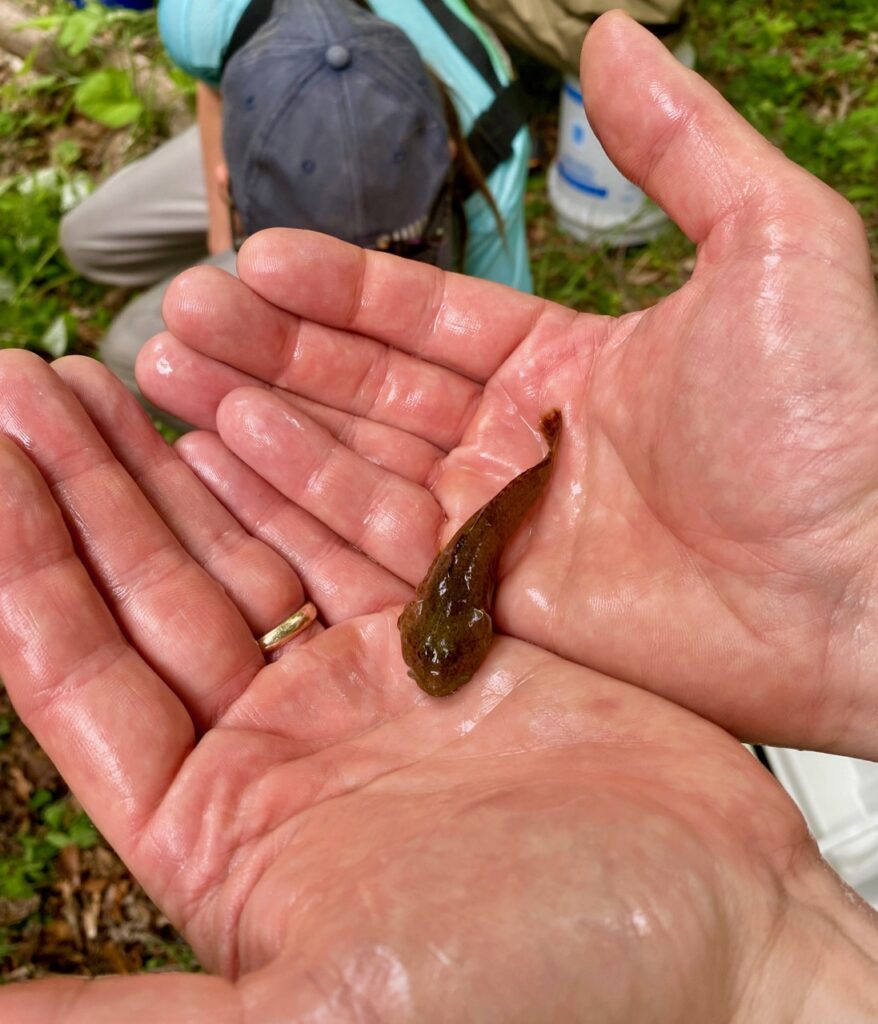
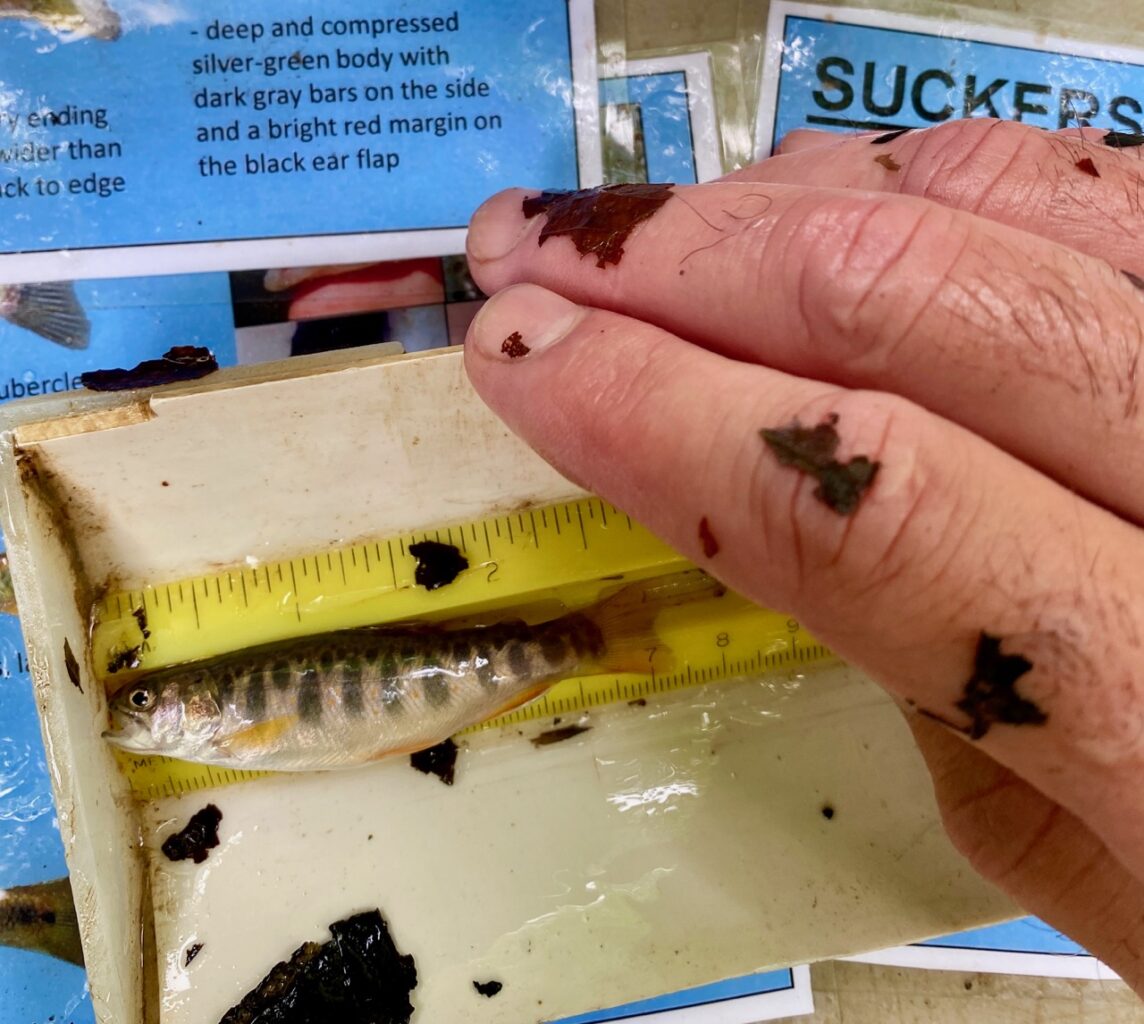
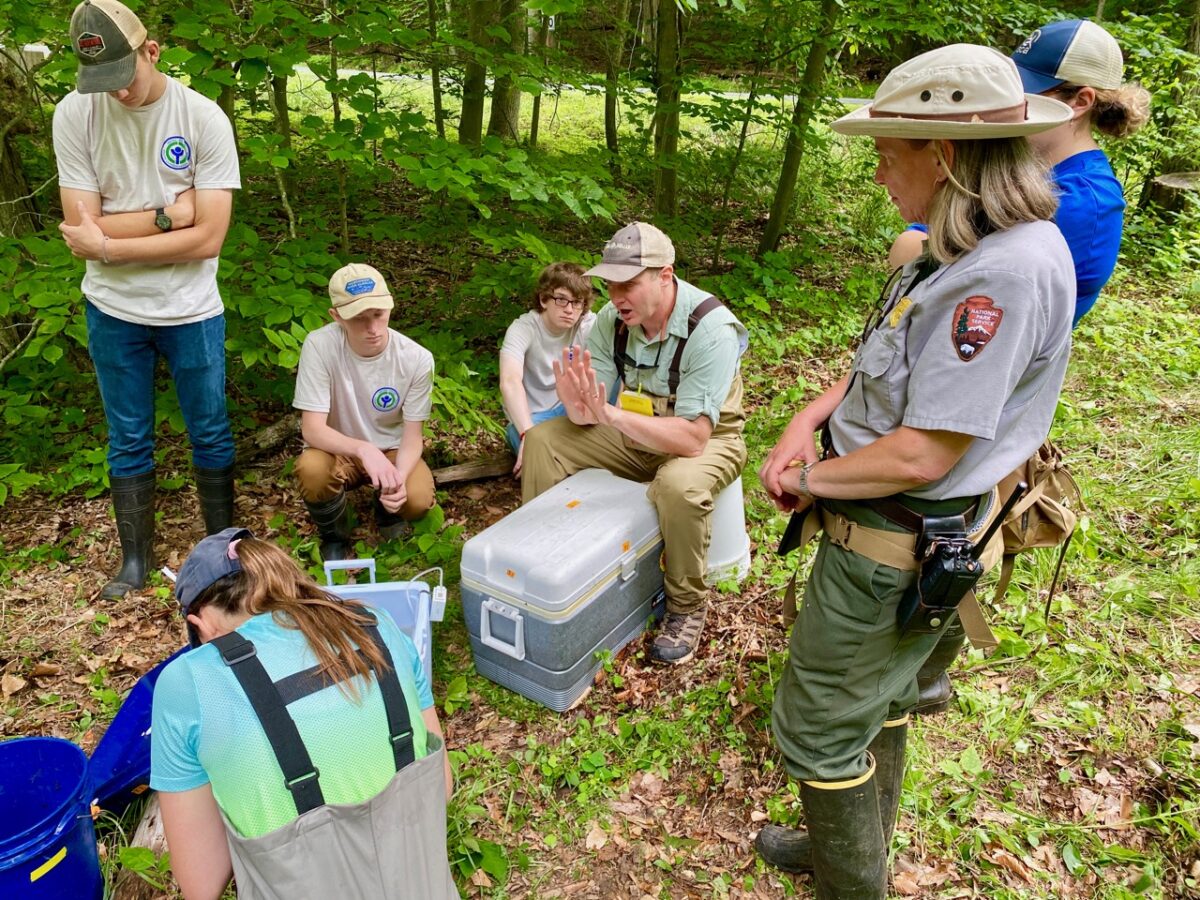
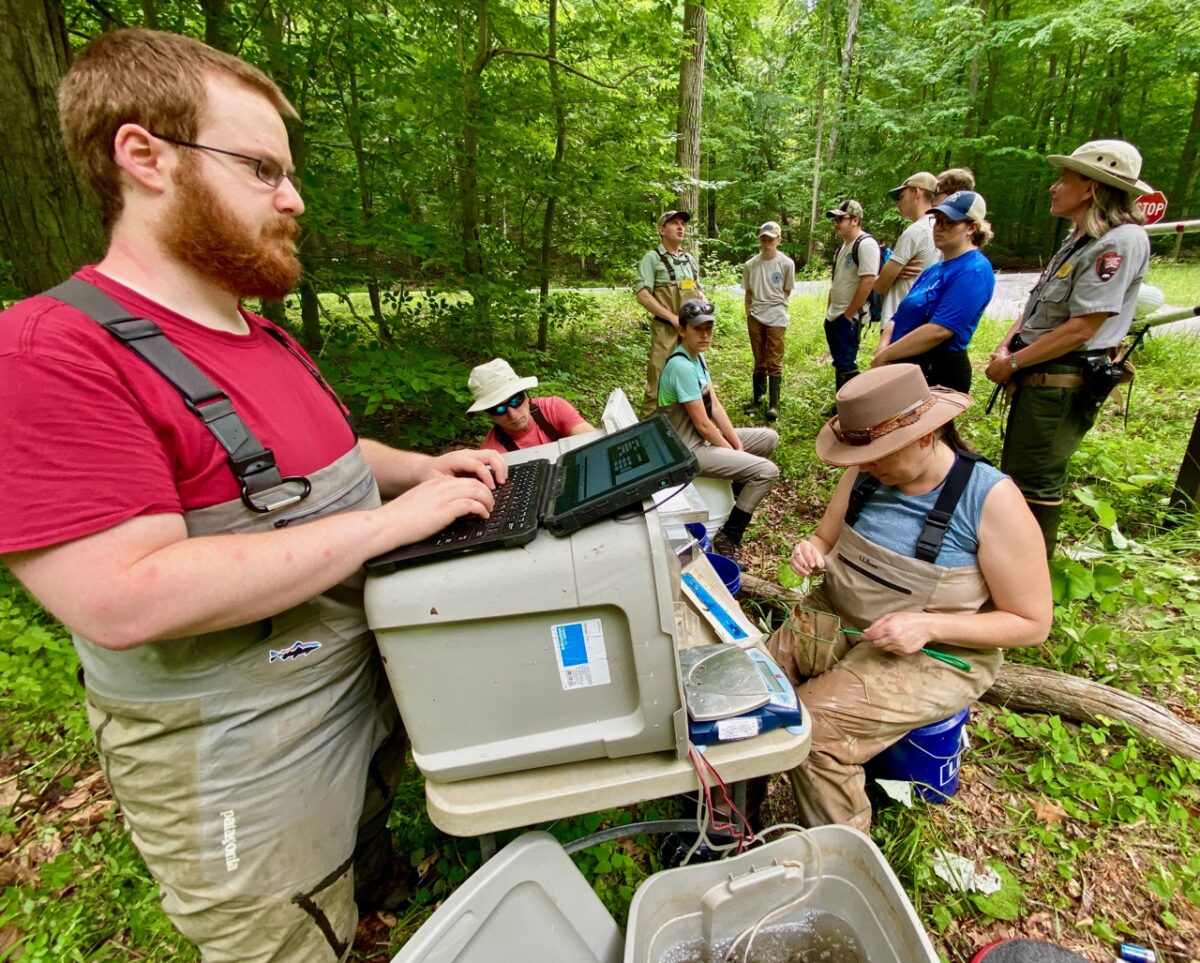








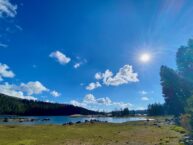
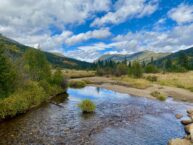


Wonderful! This piece was/is clearly a labor of love. Congrats!
My Magnum Opus for this summer. I don’t think people will find this level of work even in what’s left of the newspapers and magazines. Too bad I don’t think people understand how hard it is and how long it takes to do this level of work. They also don’t seem particularly interested in helping to fund it. There’s too much crazy clickbait out there, too much noise in the system: What Humanity Needs: A Shared Narrative for the 21st Century